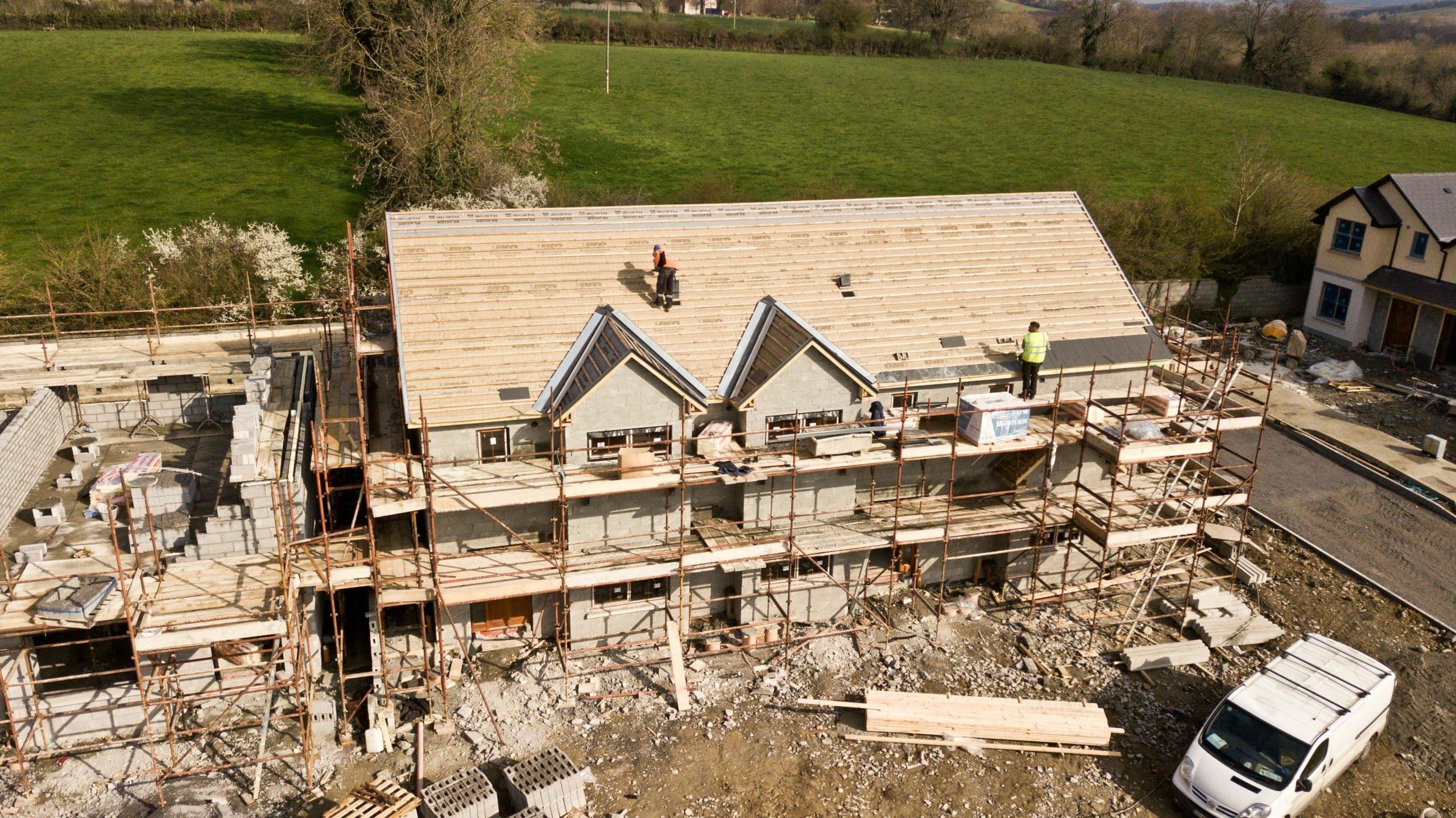What Are the Latest Innovations in Eco-Friendly Roofing Materials?

In the quest to reduce our carbon footprint and create more sustainable homes, every aspect of the construction process comes under scrutiny. That includes the roofing industry, which is continually innovating to develop more eco-friendly materials and systems. From solar tiles to cool roofs, we’ll explore some of the most recent innovations that are transforming roofs across the globe, making them not only functional but energy-efficient and environmentally friendly as well.
Solar Shingles: Power Generation Meets Aesthetics
As we continue to seek out renewable energy sources, the industry has made significant strides with ‘solar shingles’. These innovative materials are a fusion of traditional roofing shingles and solar panels. Unlike bulky solar panel systems, solar shingles blend seamlessly with traditional roofing materials, enhancing the aesthetic appeal of your home without sacrificing energy efficiency.
Also to read : How to Develop a Landscape Design That Conserves Water in a Dry Climate?
Solar shingles, also known as photovoltaic shingles, are designed to absorb sunlight and convert it into electricity for use within the home. The energy produced can power appliances, lighting, and even heating systems, significantly reducing your reliance on the grid. Their introduction has marked a major shift in the roofing industry, providing homeowners with an efficient, aesthetically pleasing way to incorporate solar energy into their homes.
Despite their higher upfront cost, solar shingles offer long-term savings by reducing energy bills. They are also becoming more affordable as the technology evolves, making them an increasingly popular choice for eco-conscious homeowners.
Also read : What’s the Best Approach for Creating a Home Sound Studio in a Converted Loft?
Green Roofs: A Living, Breathing Roofing Solution
Green roofs, also known as living roofs, are emerging as an innovative eco-friendly roofing solution. They involve the installation of a layer of vegetation on the roof surface. This living layer not only adds an aesthetic element but also provides a range of environmental benefits.
Green roofs can absorb rainwater, reducing the risk of stormwater runoff and associated flooding. The vegetation also acts as an insulator, reducing heat absorption in summer and heat loss in winter. This natural insulation can significantly improve a building’s energy efficiency, leading to lower heating and cooling costs.
The vegetation on a green roof also absorbs CO2, a major greenhouse gas, and releases oxygen, improving air quality. For urban areas, green roofs can provide much-needed green spaces and habitats for wildlife, promoting biodiversity.
Cool Roofs: Reflecting Sunlight for Lower Energy Consumption
In the face of rising global temperatures, the roofing industry has responded with ‘cool roofs’. These roofs are designed to reflect more sunlight and absorb less heat than standard roofs, helping to reduce energy costs, improve indoor comfort, and mitigate urban heat island effects.
Cool roofs use light-colored, reflective materials or special coatings that reflect a larger amount of solar radiation compared to traditional roofing materials. By reflecting sunlight, these roofs remain cooler and reduce the amount of heat transferred to the building below. This can lower energy use by reducing the need for air conditioning, contributing to a reduction in greenhouse gas emissions.
Cool roofs are an effective solution in hot climates, offering potential energy savings of 20-30%. They also contribute to improving air quality by reducing the demand for power and the associated air pollution and greenhouse gas emissions.
Recycled Roofing Materials: Turning Waste into Resource
The construction industry has a significant environmental impact, with a large amount of waste generated. In recent years, the roofing industry has been exploring ways to recycle waste into new roofing materials – an innovation that could revolutionize the industry.
These recycled roofing materials can be made from a variety of waste products including rubber, plastic, and even old roofing materials. For instance, old asphalt shingles can be ground up and recycled into new shingles or used as a component in road construction. Similarly, recycled plastic and rubber can be transformed into durable, weather-resistant roofing tiles.
These materials not only reduce waste but are often more durable and require less maintenance than traditional materials. They also reduce the need for new raw materials, conserving resources and reducing the environmental impact associated with mining and processing.
Metal Roofs: Longevity and Energy Efficiency Combined
While not a new concept, metal roofing has seen a resurgence in popularity due to its durability and energy efficiency. Metal roofs can last up to 50 years or more, significantly longer than traditional asphalt shingles. This longevity reduces the need for replacement, saving resources and reducing waste.
Moreover, metal roofs can also be highly energy efficient. They reflect solar radiant heat, which can reduce cooling costs by 10-25%. Some metal roofs are also coated with special reflective pigments that enhance this effect, making them an excellent option for energy-conscious homeowners.
Another eco-friendly aspect of metal roofing is that it is often made from recycled materials and is fully recyclable at the end of its life. This circular approach minimizes waste and makes metal roofing a sustainable choice for the long term.
Clay Tiles: Traditional, Sustainable, and Energy Efficient
Clay tiles, while not a new development, are seeing renewed interest due to their sustainable and energy-efficient qualities. These tiles have been used for thousands of years, but their eco-friendly aspects are just now starting to be fully appreciated.
Clay tiles are made from natural clay which is abundant and easily obtainable. Unlike synthetic materials, clay is renewable and has minimal impact on the environment during the extraction process. Furthermore, old clay tiles can be crushed and reused, significantly reducing waste.
Energy efficiency is another key aspect of clay tiles. Due to their thermal mass, these tiles can absorb heat during the day and release it at night. This helps regulate indoor temperature, reducing the need for artificial heating and cooling. By lowering energy consumption, clay tiles contribute to the reduction of greenhouse gas emissions.
Also, clay tiles have a lifespan of over 50 years, making them a durable choice. Their long life reduces the frequency of roof replacements, further conserving resources and reducing waste. These qualities make clay tiles an excellent choice for eco-friendly roofing.
Bamboo Roofing: An Innovative and Renewable Resource
Bamboo is a rapidly renewable resource that is becoming more prevalent in the construction industry, including roofing. Bamboo is exceptionally strong and durable, making it an excellent material for roofing. Moreover, it grows significantly faster than traditional wood, making it a more sustainable option.
Bamboo roofing is not only strong and durable, but it also has excellent insulating properties, enhancing the energy efficiency of buildings. This reduces the need for artificial heating and cooling, leading to lower energy consumption and reduced greenhouse gas emissions.
Furthermore, bamboo can be harvested without killing the plant, ensuring a continuous supply without causing deforestation. This makes it an ideal material for those seeking to incorporate more eco-friendly materials into their buildings.
It’s also worth noting that bamboo roofing has a unique aesthetic that can add a natural, rustic charm to a building. This combination of sustainability, durability, and aesthetics makes bamboo roofing a fascinating innovation in eco-friendly roofing.
Conclusion: The Future of Eco-Friendly Roofing
The global concern for the environment is driving innovation in many industries, and the roofing industry is no exception. The materials we have discussed – solar shingles, green roofs, cool roofs, recycled roofing materials, metal roofs, clay tiles, and bamboo roofing – display a remarkable variety of approaches to the challenge of creating more eco-friendly and energy-efficient roofing options.
These innovations are not only helping reduce the environmental impact of buildings but are also leading to significant cost savings for homeowners through improved energy efficiency. As these materials become more commonplace, it is expected that their costs will continue to decrease, making them increasingly accessible to a wider range of homeowners.
In the future, we can expect to see further innovations in eco-friendly roofing as the industry continues to evolve in response to environmental challenges. Investing in these technologies is not just about protecting the environment; it’s also about creating more sustainable, energy-efficient homes that will benefit us for generations to come.
The shift towards greener solutions is not just a trend, but a necessity for a more sustainable future. As consumers, it’s essential to stay informed about these innovations and consider how we can incorporate them into our homes. After all, every step towards more sustainable living is a step towards a healthier planet.
